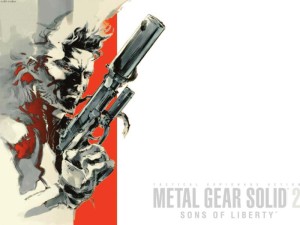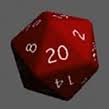![2389904-master_chief_in_halo_4_wide[1]](http://www.fictorians.com/wp-content/uploads/2013/08/2389904-master_chief_in_halo_4_wide1-300x187.jpg) A guest post by Aaron Scott Hildebrandt
A guest post by Aaron Scott Hildebrandt
If you haven’t done so yet, make sure you read From Zork to Halo and Back Again, Part One.
Computers, as a storytelling medium, are separated by the mediums that preceded them by a simple but important difference–computers are technology, and technology is constantly shifting. At first, personal computers were glorified word processors, and naturally some of the first stories told on computers were the same stories we had been telling in books, but with some added eyestrain.
It wasn’t long, however, before the medium evolved. With computers, stories could be manipulated in ways that were never possible with just a printed page. Out of this one of the earliest computer game genres was born: interactive fiction. Essentially, these were books that cast the reader as the main character, telling stories in second-person while giving the reader control over where they went and what they did. It’s a setup we’d already seen in previous mediums; the Adventures of You books, followed later by the Choose Your Own Adventure series, played with this very effectively, though the interaction you could have with the book was confined to choosing one of several predefined paths through the narrative.
Role-playing games like Dungeons and Dragons (the direct inspiration for the first piece of interactive fiction ever written, Will Crother’s Colossal Cave Adventure), used a mixture of written and oral storytelling to achieve this. But computers could do this on a much more impressive level–stories could have more variation, more interactivity, and could achieve this without the reader/player having to rely on another person to tell the story, or dice rolls to determine random outcomes. It was awesome. It still is.
It wasn’t just interactivity that set computers apart as a medium. In 1992, William Gibson’s poem “Agrippa” took advantage of the fact that, on a computer, words were mutable; as you read the work, it deleted itself from the device it was stored on, driving home the poem’s feeling of loss. When all computers could do was store and manipulate text, it created a fertile ground for experimentation. We can thank this era for some of the most impressive examples of the medium, such as Steve Meretzky’s philosophical masterpiece A Mind Forever Voyaging, and Tim Anderson, Marc Blank, Bruce Daniels, and Dave Lebling’s definitive game Zork (and its numerous sequels).
But as I said, technology shifts. After a while, computers started pumping out more than just text. Soon, there was sound, and then graphics. Now, only a handful of years later, we have high-definition ray-traced stereoscopic visuals, 5.1 surround sound, and fifty-inch plasma displays (not to mention motion controls, virtual reality helmets, and the Rez Trance controller). Things have changed.
This constantly shifting technology has a peculiar effect on storytelling. At first, computers could be used to emulate the storytelling we used in books. Then the medium evolved, and people used it to tell original stories that could only have been told in this medium. But with the advent of computer graphics, we found we could emulate stuff other than books. We could draw on new inspirations and translate other mediums, like movies. Imagine movies where you are the main character! In a way, it was the holy grail of entertainment–something that involved multiple senses and placed you in the middle of the story.
This is where the history of computers as a storytelling medium breaks from a lot of the mediums that came before it. The idea that computers could be used to tell the same sort of stories we saw in movies–with bonus interactivity–launched us into a technological arms race. With the static mediums that came before it, we had a lot of time to sit and think about how we could use the medium to tell stories in new and exciting ways. With computers, however, we became obsessed with telling the same stories with newer technology, over and over, each time embracing the new technology but almost never pushing the medium. By and large, we treat computer and video games like we treat movies; we use the same visual language, the same story structure, the same narrative tricks. Instead of evolving the medium to tell new stories, we put innovation on the backburner. What separates games released one year from the games released the next isn’t a daring new approach to computer-aided storytelling–it’s iteration.
In a way, I wish a giant pause button could be pushed on the computer industry, forcing everyone to get creative with the toys we already have. But as much as the technological arms race has stunted the growth of computers as a storytelling medium, it’s also gotten us to an incredible position for innovation. The computers we have now are cheaper and more accessible than they’ve ever been before, and it’s allowing an incredible amount of people to get into computerised storytelling–people who are less obsessed with chasing the technology curve, and more obsessed with pushing the medium.
Offhand, I can think of numerous games that tell stories that could never have been told–or at least couldn’t have been told nearly as effectively–in other mediums. Façade, by Michael Mateas and Andrew Stern, casts you as the friend of a quarrelling couple, using a simple interface to tell you an intimate, emotional, and deeply mutable story. The recently released Papers, Please, by Lucas Pope, has you playing an immigration inspector, the story dictated only by the simple action of accepting or rejecting passports. Zoe Quinn’s phenomenal Depression Quest puts you in the shoes of someone dealing with chronic depression, using an extremely clever interactive device to stress how powerless those fighting depression can feel about their situation.
It’s no coincidence that all these games use very simple graphics and are usually the product of extremely small teams–often just one or two people. None of these stories use bleeding-edge technology. Instead, they use existing tools to tell new stories, leveraging the aspects of computers that help them construct their narrative and discarding the ones that don’t. People with no background whatsoever in programming or computer sciences can now make interactive stories in their spare time, and many do.
Of course, there’s more to computers than keyboard, mice, and screens, and this is one of the preconceptions we need to shed. Alternate Reality Games (or ARGs), popularised by Elan Lee and Jane McGonigal, use computers to pull off incredible feats of storytelling that break free of the constraints of the screen, telling single stories across websites, emails, videos, and phone calls. Epic, multimedia stories like The Beast and I Love Bees couldn’t have been told without the use of computers. Players of the hilarious, fantastic, and impeccably named game Johann Sebastian Joust (made by Copenhagen-based Die Gute Fabrik) might forget that there’s a computer involved at all–though the game is played with video game controllers, the screen can be ignored completely by the people playing it.
Sometimes it’s hard to imagine that the same medium has spawned Colossal Cave Adventure, Call of Duty, Façade, and The Beast. Computers might be the most versatile and powerful storytelling medium that’s ever been found, and its potential has been largely untapped. We’ve gotten a little stuck. But that doesn’t mean it’ll stay that way–science fiction has already dreamt up countless ways we can use technology to tell stories, from the magic of Star Trek’s holodeck to the fever dream of William Gibson’s virtual reality to the educational potential of Neal Stephenson’s A Young Lady’s Illustrated Primer. We’re ready for the next stage in computerised storytelling, whatever that is.
As a storytelling medium, computers have still only flirted with greatness. But we also need to remember that using computers to tell stories is still a brand new thing–we can forgive this little hiccup. We’ve been telling oral stories for so long that we have no idea when we started. We’ve been writing down stories down for at least four and a half thousand years. Novels have been refined over four hundred years, and we’ve been making films for a hundred and thirty. It’s only been fifty years since the first computer game, and less than forty years since we started using computers to tell narrative stories. This is where things get interesting. Right here, right now. The medium has become accessible, prevalent, and open to experimentation. It’s time to start throwing shit at the wall–some of it might even stick.

Aaron Scott Hildebrandt is a narrative designer and animator living in Vancouver, Canada. His work can be found in a number of games, including Halo: Anniversary, Halo 4, and Remember Me, as well as the web series H+. He’s also the author of the upcoming web serial Hanna Buys the Farm.

![zork_1[1]](http://www.fictorians.com/wp-content/uploads/2013/08/zork_11-300x235.jpg) A guest post by Aaron Scott Hildebrandt
A guest post by Aaron Scott Hildebrandt



